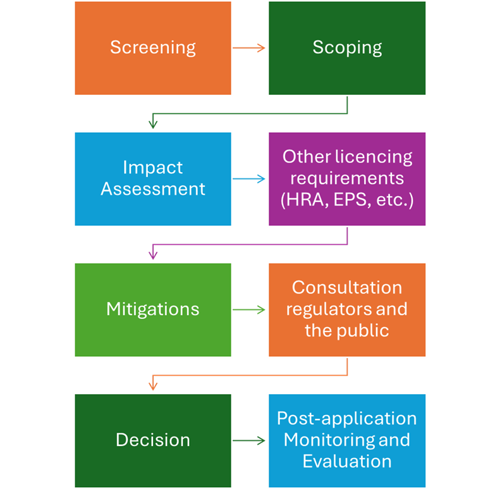Insight
Marine Licensing: What we've learned from supporting coastal infrastructure projects

Insight

The path from coastal infrastructure concept to construction is rarely straightforward—and marine licensing is often where the real complexity begins. Drawing on years of experience supporting ports, harbours, and marine developments, across the UK and beyond, our teams at NIRAS have seen just how pivotal a well-managed licensing process can be—not just for regulatory compliance, but for long-term project success.
While legislation sets the rules, experience helps you interpret and apply them in a way that’s both efficient and robust. In this insight, we reflect on some of the common challenges and lessons learned from supporting clients through marine licensing and environmental assessments in the UK and internationally.
Marine licensing frameworks like the Marine and Coastal Access Act 2009 and the Marine (Scotland) Act 2010 create the legal foundation for managing coastal and offshore development. But what’s often overlooked is the need for early and strategic engagement with these processes to ensure better project outcomes.
From screening and scoping to full Environmental Impact Assessments (EIAs), the most successful projects are those that treat licensing not as a final checkpoint but as an integral part of the design process—one that invites scrutiny, strengthens resilience, and reduces risk over the long term.

Every coastal or marine development will, by nature, interact with the local environment. Whether it’s dredging for marina access or expanding quay walls to accommodate larger vessels, these activities require a detailed understanding of their potential ecological effects.
We’ve found that defining the Zone of Influence early on is crucial—this helps teams focus their assessment efforts and avoid over- or under-scoping surveys and mitigation. Equally important is timing. For instance, marine ecology surveys are often seasonally constrained. Missing a survey window can mean months of delay.
A rigorous yet practical baseline assessment—grounded in local context, existing data, and regulatory expectations—gives developers the best chance of progressing without surprises.
For projects in or near designated sites (such as SACs or SPAs), a Habitats Regulations Assessment (HRA) is required. Likewise, if works may affect marine mammals or other European Protected Species (EPS), developers will need specific EPS licences.
These processes can feel like barriers, but in reality, they’re opportunities to demonstrate good stewardship. In our experience, early and transparent consultation with regulators and statutory bodies helps streamline assessments and avoid duplication. The key is to come prepared—with clear impact pathways, realistic mitigation measures, and a willingness to adapt the project if needed.
At Peterhead Port, we’ve supported multiple infrastructure upgrades, including quay extensions and marina dredging. Each required careful alignment between project design and regulatory expectations—balancing engineering needs with environmental constraints. Our work included Environmental Appraisals, HRAs, EPS risk assessments, and sediment sampling, all aimed at keeping the project on track and within compliance.
Similarly, at Sullom Voe Oil Terminal, we've worked alongside Shetland Islands Council and terminal operator EnQuest to support ongoing maintenance and infrastructure works. The work planned at SVT requires a marine license, with the terminal sitting within a Special Area of Conservation and close to other designated sites. Each activity needs its own strategy for assessment, documentation, and engagement.
The most valuable lesson we've learned? Marine licensing works best when it's integrated early - built into the DNA of the project, so that the licensing does not end up driving the programme.
Meghan Rochford, Coastal Projects Specialist
The most valuable lesson we’ve learned? Marine licensing works best when it’s integrated early—built into the DNA of the project so that the licensing does not end up driving the programme. It’s a tool that helps refine design, anticipate risk, and demonstrate that a project is both feasible and responsible.
As marine and coastal developments face growing scrutiny—on both environmental and societal grounds—this kind of early, joined-up thinking is no longer optional. It’s essential.
Our environmental and marine teams are happy to talk through the practicalities. From concept to construction, we help clients stay compliant, confident, and prepared for what’s next.

